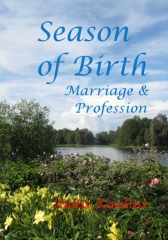"Crawford on his bike. Note the roll of 6 inch Ordnance Survey maps across the handlebars. In the background is the garage at his lodgings where during the war he stored most of the archaeological records, thus preserving them from the bombing which destroyed the OS offices. These records now form the basis of Sites and Monuments Records throughout the country." (emphasis added)
Crawford was a controversial figure, who, among other things, served as the first field archaeologist at the Ordnance Survey, who was one of the inventors of aerial archaeology, and who in 1927 founded the well-known and still influential periodical Antiquity .
The book has also been reviewed by Tom Fort at the Telegraph in Mapping Britain's Archaeology, Simon Heffer at the Literary Review in No Ordinary Surveyor, and by Simon Garfield at the Guardian in A real backwards man.
A mention is found at the blog Carolyn Trant & Parvenu Press.
Tom Fort writes about Crawford in Hauser's book in this text, excerpted from his review :
"Crawford's supreme attribute was his eye; in Hauser's words, 'he saw things where others saw nothing.' With it, he was able, as he himself put it, to decipher the palimpsest: to make out the burial mounds, abandoned settlements, Celtic fields, Roman causeways, Iron Age tracks and other vestiges of the remote past.
Having served as a mapper and aerial reconnaissance officer during the First World War, Crawford was aware of the extraordinary way in which photographs taken from the air could reveal whatHauser calls 'the ancient text' of the landscape.
Most famously, he used negatives stored by the RAF to identify the avenue leading from Stonehenge to the river Avon.
Until Crawford came along, field archaeology was pretty much left to gentleman amateurs interested in ley lines, morris dancing, obscure fertility rites and other aspects of imaginary Old England. As Hauser demonstrates, Crawford turned it into a professional discipline, both through his work for the OS, and his editorship of Antiquity, the journal he founded to promote his version of the search for the past.
He was a visionary, in a limited way, and prodigiously hard-working."